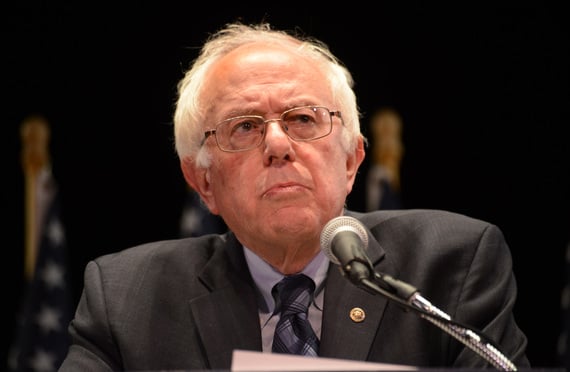 Whilea lot will depend on whether and to what extent a second outbreakoccurs, a few key trends have emerged that will havemajor short-term impacts on health care spending andutilization.
Whilea lot will depend on whether and to what extent a second outbreakoccurs, a few key trends have emerged that will havemajor short-term impacts on health care spending andutilization.
Since the start of the COVID-19 pandemic in the United States,study after study has attempted to quantify the financial impactthe outbreak will have on our health care system. Premiums will goup, unless they go down. Health care spending will increase, maybe?And hospital revenues are plummeting, despite packed ICUs.
|As the outbreak has progressed, the outlook has become rosier inmany ways, at least for employers. Because so many consumers havedelayed non-essential doctor visits and procedures, some insurersare actually issuing premium rebates or waiving cost-sharingrequirements. While benefits brokers and advisors finally have somegood news to share with clients, they must also be prepared for thefollow up question: How long will this trend continue?
|Related: Revised estimate pegs COVID-19 costs at $30B to$547B
|"We've been through things that have similarities to thiscrisis, but nothing that has all the elements," Mark St George, aprincipal with PriceWaterhouseCoopers, said in a recent webinarhosted by the National Alliance of Healthcare Purchaser Coalitions."Key elements everyone should be thinking about include the cost ofcare, the cost of testing, and the deferred utilization impact. Aspayors are finding out, the shutdown of the medical system ishaving an outsized impact due to the cost of care."
|While a lot will depend on whether and to what extent a secondoutbreak occurs, as well as government intervention to helpindividuals and businesses, a few key trends have emerged that willhave major short-term impacts on health care spending andutilization. And the actions brokers and their clients take inresponse to these trends will determine whether the long-termimpacts are positive or negative.
|Health care providers are getting walloped
According to one estimate from Chicago-based accounting firmCrowe, health care systems are losing an average of $1.4 billion inrevenue each day during the pandemic. The cancellation or delay ofelective procedures led to a 56% reduction in hospital trafficbetween March 1 and April 15. Since then, revenue reports from thenation's leading hospital systems have continued to paint anincreasingly dark picture.
|Even as hospitals prepare for surges in COVID-19-related volume,those costs won't be enough to offset the revenue lost to decreasedtraffic. Hotspots such as California, Florida and Texas have seennet decreases in traffic of 50%, 47% and 46%, respectively,according to the Crowe report. Moreover, elective procedures tendto have a higher margin of profitability than emergencyservices.
|The Crowe report estimates that in order to recover, hospitalswill have to run at 110% of previous capacity. The government hasalready provided a significant infusion of cash to keep hospitalsafloat, but there will still be shortfalls to be made up, possiblyresulting in increased prices and negotiated rates in future years.Further adding to the stress will be the increase in both uninsuredindividuals and Medicaid enrollees, populations for whom carereimbursements are much lower.
|Of course, not all hospitals are in the same boat. "Positionedto better weather this storm would be some of the larger healthsystems with significant reserves and those that integrate theinsurance and provider side of the equation," says Rob Brinkerhoff,health care practice managing director with Gallagher's benefitsand HR consulting division.
|While rural hospitals and "safety net" health systems thatprimarily serve Medicaid populations will continue to struggle,larger systems actually have the potential to expand. "Some of thelarger health care systems that have become dominant have $8billion, $10 billion, $14 billion sitting around," David Blumenthalof The Commonwealth Fund said in a recent webinar hosted byCatalyst for Payment Reform. "It will be a buyer's market, ifhealth systems choose to acquire struggling practices andstruggling facilities."
|Key among those struggling groups? Independent primary careproviders. "Hospitals are getting a lot of attention—and theyshould—but a silent crisis is going on where you have heroicefforts on the part of primary care clinicians to try to meetpatients where they are and keep them safe," said Ann Greiner ofthe Primary Care Collaborative, another panelist in NationalAlliance's webinar. "We can't afford to lose this primary careinfrastructure, or see small practices being acquired by largesystems, because then prices are going to go up."
|The extent to which this happens depends on the actionsemployers and insurers take in the coming months. Some insurershave already committed to "pre-paying" claims to smaller practices,helping to keep the doors open when traffic is down. "Privatepayers have to use some of the largesse they have to advancepayments to primary care and make sure they remain viable,particularly the independents," Greiner said. In addition, nowwould be the time for payors to push away from fee-for-servicemodels to value-based care or direct primary care.
|Telehealth has finally entered the mainstream
For patients and providers alike, telehealth has proven to be alifesaver, says Gallagher's Brinkerhoff. "Those in the telehealthand virtual care space are very well positioned to growdramatically when we move into the post COVID-19 world."
|Leading telehealth provider Teladoc saw its first-quarterrevenues jump 41% over the previous year and is expecting strongperformance in the second quarter, as well. "Patients are going tocome to like virtual visits and telemedicine," said CPR webinarpanelist Jay Crosson of MedPAC. "In the current situation, we havemoved to 60% to 90% televisits, depending on specialty. I thinkthat genie won't be put back in the bottle."
|The momentum is there, but there's still the issue of howtelemedicine visits are paid for. Currently, many private insurersreimburse telehealth visits at a lower rate than office visits,which, while good for the payor, doesn't help struggling careproviders.
|"In terms of payment in the fee-for-service environment, therearen't a lot of options," Crosson said, noting some options toconsider when re-evaluating how telemedicine is addressed in thebenefits plan. "You can limit the number of visits per year ormonth, put in place electronic auditing to make sure visits werereal and lasted as long as was billed, but all of that iscumbersome. The hope is that this triggers some capitation model,both in commercial and Medicare."
|Deferred care isn't necessarily a good thing
The drop in elective and routine care is resulting in immediatesavings for payors, but how long will the trend last? It depends,in part, on how the pandemic plays out. The longer people stayinside, the longer they not only avoid unnecessary care, but alsoshield themselves from communicable diseases such as the flu, orinjuries from outdoor activities, further adding to a reduction inclaims.
|"We've seen decreases, starting in earnest in April, with 20% to80% of elective procedures being deferred," said PwC's St George."Some of that will come back, but as we've learned from HurricaneSandy, much of that care will never return. That could be as muchas 20% or more—we really don't have a precedent."
|Some of those claims will be for low-value services that werenever really warranted in the first place, but potentiallylife-saving screenings and appointments are also being shruggedoff. "The bigger concern here is that patients who have delayedcare without consequence so far will wait too long for care andpresent with a more acute condition and/or co-morbidities,"Brinkerhoff says. "The vast majority of health care systemscontinue to provide medically necessary care for patients withchronic and/or life-threatening conditions, but what continues tobe worrisome is that there is an emerging patient population thathas yet to be diagnosed based on social distancing restrictions andthe fear of contracting the virus in practice settings."
|Indeed, a study in New England Journal of Medicine points to a40 percent reduction in people seeking medical treatment for strokesymptoms. Oncologists have noted a similar trend among cancerdiagnoses and are predicting an uptick in late-stage cancerdiagnoses after the pandemic subsides.
|This is an opportunity for advisors, employers, carriers andother health care partners to come together and prepare for thosecomplications down the road. The savings they're currently enjoyingin their health care costs may be better spent on programs toaddress and manage chronic conditions, or even investing in aswitch to a value-based care strategy.
|"This is a great opportunity to have those alternative healthconversations," said CPR webinar panelist Ellen Kelsay of BusinessGroup on Health. "Many health provider partners have seen thereduction in claims payments. How are they proactively managing thechronic conditions? How are they setting themselves up for the nextwave of utilization that needs to be addressed?"
|Social distancing and isolation will take a toll
As if high rates of unemployment and a recession weren't causingAmericans enough stress, social distancing and remote work are alsopredicted to lead to an uptick in mental health issues. "Behavioralhealth and wellness is another area that should absolutely beenriched from a design and coverage standpoint," Brinkerhoff says."I'm confident the need for behavioral and emotional support willincrease exponentially across all sectors and industries as we moveforward."
|Prescriptions for anti-anxiety and antidepressant drugsincreased during the first months of the COVID pandemic. As peopletry to adjust to new routines—either in the workplace or athome—the need for mental support is going to increase. "Mentalhealth access was awful before COVID, and we need to use thisopportunity to re-engage mental health professionals, bring themback into the system and keep them," said National Alliancepresident and CEO Michael Thompson.
|For employer plans, this will include not only re-thinkingintegration of physical and behavioral benefits, but also retoolingEAPs and even wellness programs. As Thompson pointed out,unaddressed mental health issues can have a major financial impact,including as much as a 30% increase in costs for comorbidconditions. "The direct medical costs are just the small tip of theiceberg," he said. "Mental health costs will go up, medicationcosts will go up, but the bigger rise is the higher cost ofcomorbidities, and then the productivity issues."
|Now is the time to push for change
All signs point to a health care spending reprieve for employersthis year; possibly as much as 4%, according to actuaries at WillisTowers Watson. Even self-insured employers, who have chosen to takeon a greater financial risk and responsibility, will come outahead, according to Gallaher's projections. "It is becomingincreasingly clear that substantial numbers of routine doctorvisits and elective procedures are being cancelled or deferred,"Brinkerhoff says. "This is resulting in an unanticipated, favorablecash flow. While much is still unknown, what is clear in mostscenarios is that the anticipated savings due to reducedutilization of the health care system will outweigh any increasedcost burden of direct COVID-19 related claims."
|One undeniably positive outcome of the disruption in health careis that it's fanning the flames of a long-smoldering reformmovement. "Many of the trends among our employer members have beenunderscored, not changed," Business Group's Kelsay said. Faced withthreats of higher prices from health care providers, largeremployers like those in her organization are in a better positionto fight back. "Our members have the bandwidth, anticipating wherethe puck may go when it comes to further price pressures. They'regoing to be increasingly active and aggressive."
|Benefits brokers and employers also have a rare opportunity tofinally get employees to take ownership of their health caredecisions, CPR founder Robert Galvin told webinar attendees,hitting on a pain point employers have struggled with for years."Most employees hardly ever think about their health care. Now,that's all they think about. Use the momentum to engage employeeswhere they are today and then drive that forward when this goesaway."
|The same sentiment was echoed by other industry experts. TheCOVID-19 pandemic has laid bare the most serious flaws in America'shealth care system. Now, it's up to those who use and pay forhealth care to decide if they want to patch the cracks or startrebuilding something new.
|"What I see now is confusion, disorientation, uncertainty andanxiety," Blumenthal said. "We have an opportunity to do majorsurgery on the way payment occurs and we have open-mindedness onthe part of physicians. Can we get out of the starting block nowand get something going that is really different?"
|Related:
Complete your profile to continue reading and get FREE access to BenefitsPRO, part of your ALM digital membership.
Your access to unlimited BenefitsPRO content isn’t changing.
Once you are an ALM digital member, you’ll receive:
- Critical BenefitsPRO information including cutting edge post-reform success strategies, access to educational webcasts and videos, resources from industry leaders, and informative Newsletters.
- Exclusive discounts on ALM, BenefitsPRO magazine and BenefitsPRO.com events
- Access to other award-winning ALM websites including ThinkAdvisor.com and Law.com
Already have an account? Sign In
© 2024 ALM Global, LLC, All Rights Reserved. Request academic re-use from www.copyright.com. All other uses, submit a request to [email protected]. For more information visit Asset & Logo Licensing.








